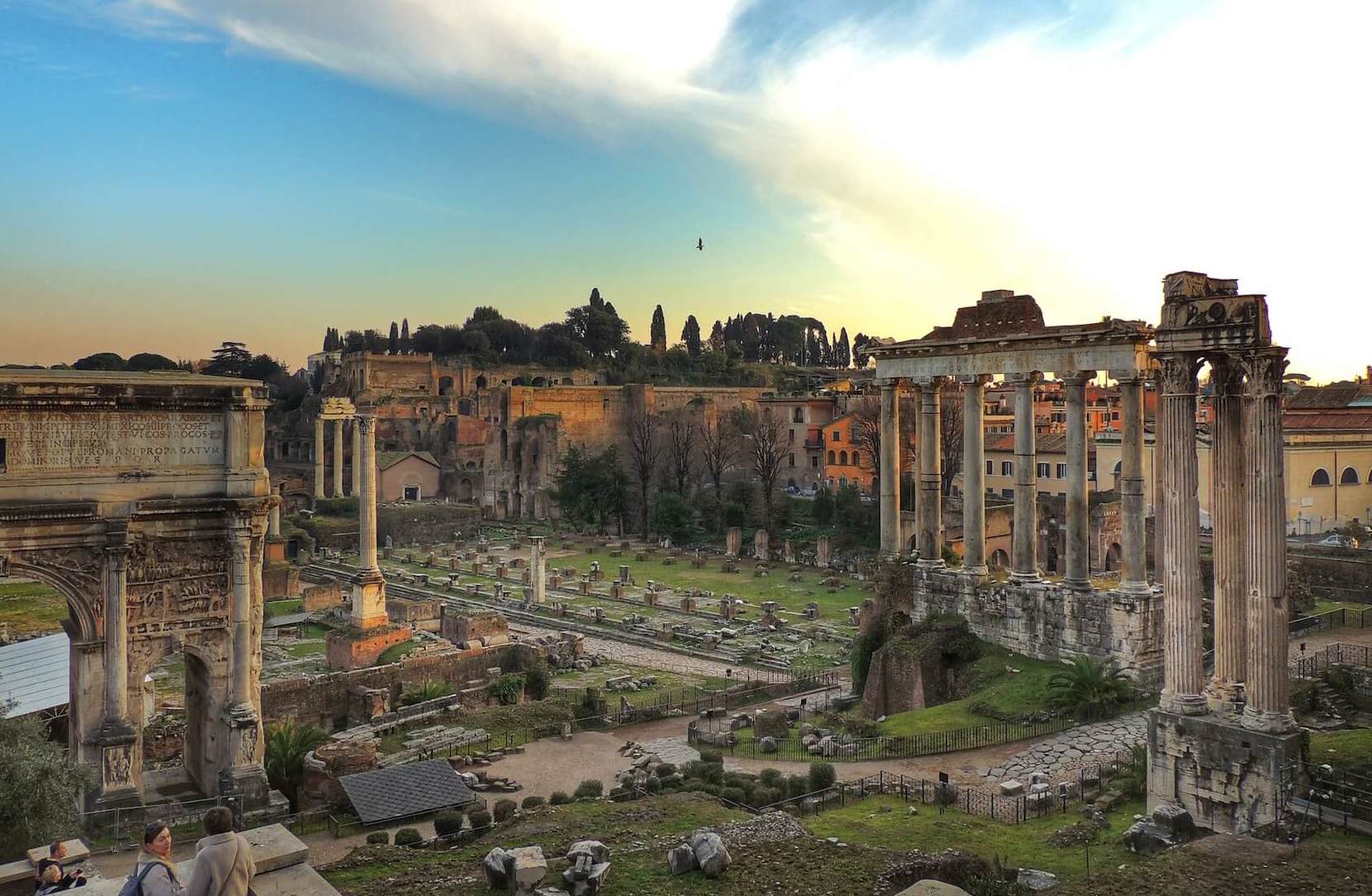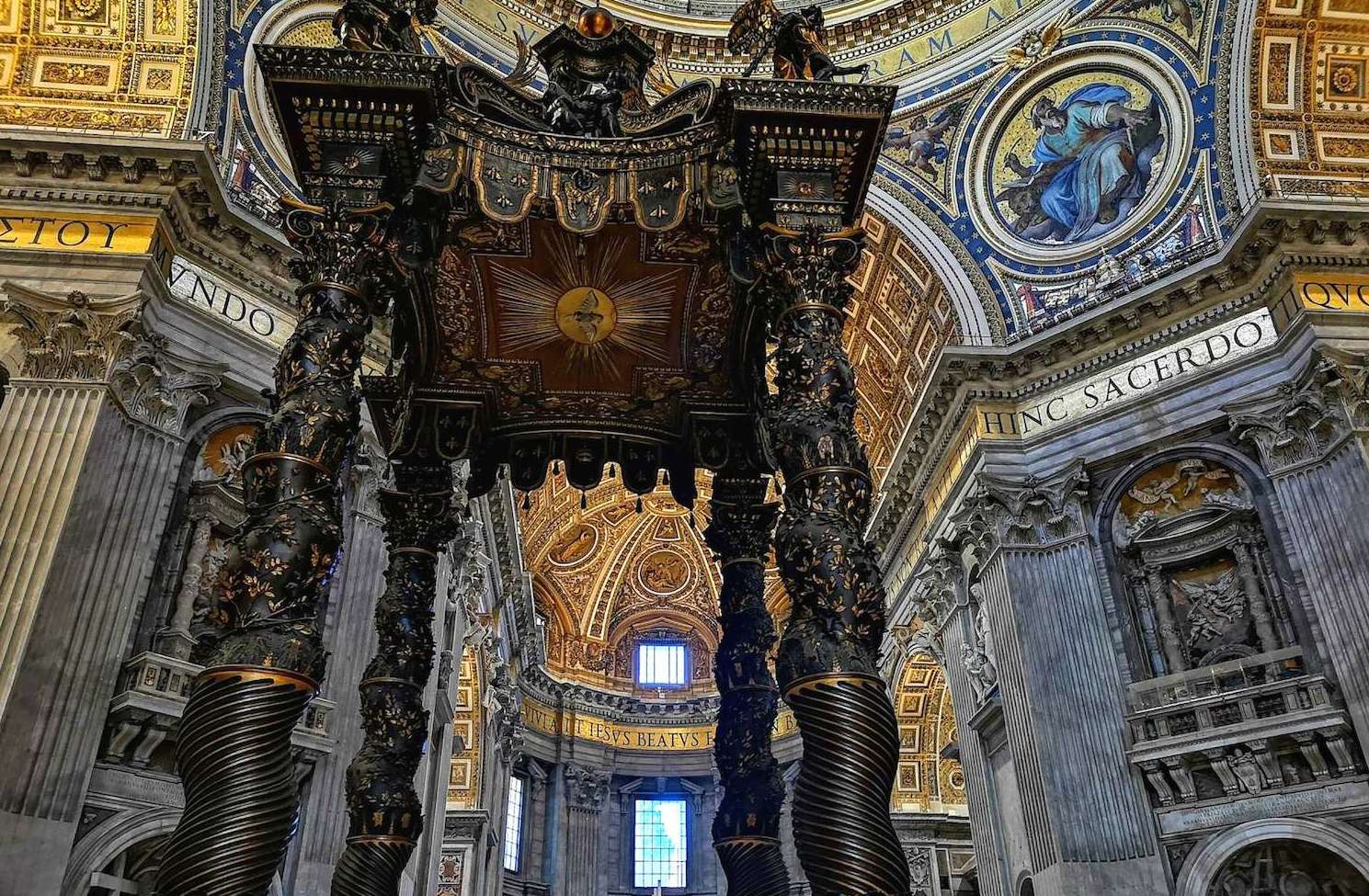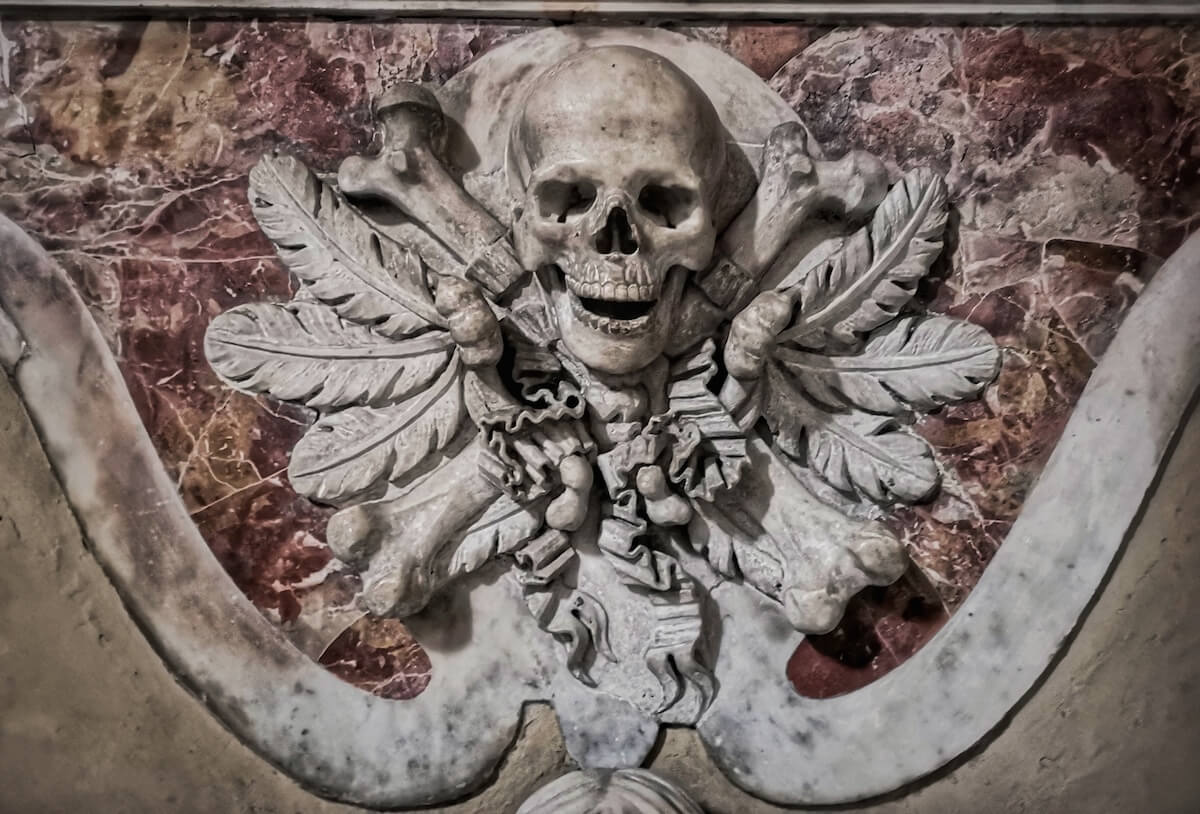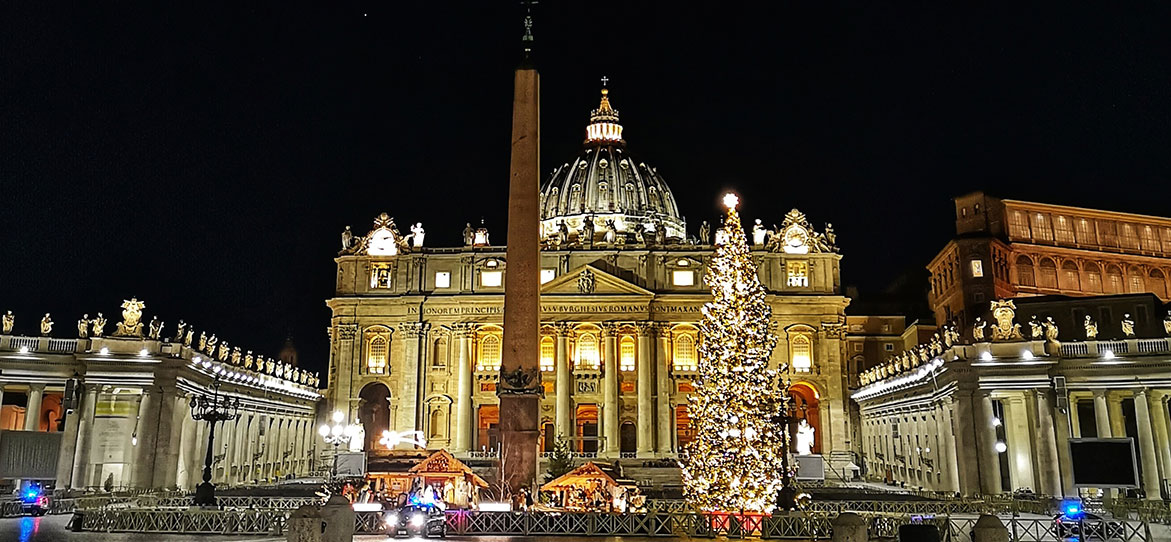Holidays with pagan origins:
- Christmas
- New Year's Day
- Easter
- The Roman version of Halloween
- May 1st - Labor Day
- Epiphany or Three Kings Day
- Saint John's Eve
When we hear or read about pagan religions and traditions , we automatically think that they're long gone, things that have absolutely nothing to do with our modern lives.
But if we are curious enough to just scratch the surface of our “modern” traditions, we might be very surprised to discover that there is actually nothing new in most of the holidays we celebrate every year . When it comes to festivities, rituals and traditions, we literally didn't invent anything. We keep doing the same things the ancient Romans used to do 2,000 years ago – we simply call them by different names.
If somebody wholeheartedly wished you a “very merry Dies Natalis Solis Invicti ” what would you reply? Or what if somebody were to ask you insistently about your plans for the Kalendae Ianuariae ? It wouldn't ring a bell, would it? The Dies Natalis Solis Invicti and the Kalendae Ianuariae , aka Christmas and New Year's day, are just two of the many holidays we still happily celebrate that actually go all the way back to ancient Rome.

But how come so many holidays survived , albeit in “rebranded” forms? When Emperor Theodosius issued the Edict of Thessalonica in 380 AD, paganism was outlawed and the Christian religion became the one and only official religion of the Roman Empire. But for the many Romans who remained faithfully devoted to Jupiter and his mythological crew, the transition to the new monotheistic religion was anything but easy.
And so the Church decided to replace the most important pagan festivities with new Christian holidays on the same dates – as the calendar remained pretty much the same as before, it was much easier for the one-time pagan populace to adjust to this new faith.
In exactly this way the date of Christmas was established on December 25th in order to replace the old Festival of the Sun God, and the same happened with many other holidays. This strategy worked out so well that with the passing of the centuries, even the memory of the original pagan celebrations faded away and was almost completely forgotten.
But this fascinating history is still everywhere apparent in Italy if you know where to look, and on our expert-led guided tours of Rome we love to help you uncover these hidden histories. So let's put aside for a moment our holidays as we have always known them and rediscover these ancient traditions – we have a lot more in common with them than you might think!
1.Christmas

We already know how we celebrate on December 25th , but how would ancient Romans have celebrated their pagan version of Christmas?
For an ancient Roman, December 25th was the time to celebrate Sol Invictus , the Unconquered Sun. The Sun God was venerated under different names all over the enormous territory of the Roman Empire and became the most important god during the 3rd century AD. The emperor Aurelianus built a big temple for the Sun God in Rome and inaugurated it right on December 25th, 274 AD. It is no wonder that the biggest celebration of the Sun God fell on this date at the beginning of winter time: on December 21st in fact, with the winter solstice, the sun “wins” his battle against the darkness and the daylight hours slowly increase . That's why such a peculiar date, marked by the victory of the light, was busy with the birthdays of many gods: Dionysos, Hercules, Adonis, Mithras and even Tammuz, the ancient Mesopotamian god of fertility.
But December 25th was only the last day of more than a week of celebrations in Rome, known as Saturnalia , leading up to the Dies Natalis Solis Invicti, the birthday of the Sun. Starting on December 17th, the Saturnalia involved a lot of banquets and all sorts of parties with family and friends. During this time, all social rules were reversed, just like in the Carnival , but the most significant aspect of the Saturnalia was the traditional exchange of gifts (just like we do nowadays). The most popular gifts for this occasion were little figurines of gods made out of clay, that used to be put on display on an altar at home: this might be at the origin of the Italian tradition of the Nativity.
Discover the story of Saturnalia in the ruins of the Temple of Saturn on our Roman Forum tour .
2. New Year's Day

Also for the Romans, New Year's Day was a very important date, but the most interesting fact is that originally the Roman year didn't start on January 1st but in March . This was mainly because March was the month dedicated to Mars, the Roman god of war, who was also believed to be the divine father of Romulus, the founder of Rome. Due to extraordinary circumstances in wartime, in the year 153 BC the consul Quintus Fulvius Nobilior exceptionally moved New Year's Day to January 1st for the first time in history.
However, it was Julius Caesar in 46 BC, with his Julian Calendar, who permanently established the holiday on January 1st. The beginning of the year was dedicated to a very peculiar Roman god: Janus. According to the mythology, Janus was the two-faced god of doors (in fact his name Janus comes from ianua, "door" in Latin), beginnings and passages: that is why the first month of the year, January, was named after him. On New Year’s Day the Romans would go on a procession to the top of the Capitoline Hill, where the priests would sacrifice a white bull to ask protection from the gods for the new year. Moreover, the high priest, the Pontifex Maximus, would offer to Janus a pie made of flour, cereals, cheese, eggs and olive oil, to invoke the god’s benevolence.
The people would then celebrate by feasting together and wearing something red, which was supposed to bring good luck, health and fertility.
3. Easter

Easter is a very peculiar Christian holiday, which doesn’t fall on a specific date as all the other festivities, but it is based on the cycle of the moon: in fact, it falls on the first Spring Sunday after the new moon. The Jewish root of the Christian Easter Holiday are widely known: the Christian festivity is in fact connected to the holiday of Passover, which has its foundation in the exodus of the Jews from Egypt.
But many traditions associated with Easter show completely different (and pagan) origins: in fact, the word “Easter” itself comes from the name of Eostre, the Germanic goddess of Spring. The famous Easter Eggs and the Easter bunny, which is supposed to deliver candies to the kids, were originally associated with Eostre, as symbols of rebirth and fertility.
What about the Romans?
The Romans had a Spring holiday around March 15th dedicated to Anna Perenna, a pretty obscure goddess, who was variously identified with the moon or with some Etruscan mother goddess. Most importantly, she was a deity of the circle of the year, given that her holiday would fall right on the first day of the year, according to the original Roman calendar. It was customary to celebrate with meals with family and friends, particularly in the woods sacred to Anna Perenna. On this occasion, the Romans would drink a lot of wine, since it was believed that each cup would lengthen their life by one full year. A traditional way of honoring the goddess, as she was also associated with the idea of fertility and rebirth, was for couples to make love by the river.

4. The Roman version of Halloween

Everybody knows that Halloween traditions originated from the ancient Celtic festival of Samhain, but did you know that the Romans had something very similar and probably even creepier?
Nowadays we have only one day dedicated to the memory of the Dead, on November 2nd, while the Romans had multiple occasions during the year to try and reconnect with their passed loved ones. In February, the week from the 13th to the 22nd was entirely dedicated to visiting the dead, bringing food offers to the graves (this particular ceremony took the name of Feralia, from fero, to bring) or even having lunch by the grave, to keep the dead person good company.
Moreover, it was customary for the Romans to leave black beans on the graves, representing their tears.
Also, the Romans used to believe that, to be at peace, the dead needed to visit the world of the living every now and then. That’s why on some days they would open the entrance of the Mundus, a deep pit which was believed to be the entrance to the underworld, to allow the dead to access the world of the living.
Learn more about ancient traditions surrounding death and commemoration on our fascinating Underground Rome tour!
5. May 1st - Labor Day

As most people know, Labor Day is a holiday that was established in 1894 to honor the labor movements and unions that improved the conditions of millions of workers. It does seem very modern, right? But it is not! In fact, May 1st was widely celebrated in ancient times too. For the Romans, May 1st was dedicated to Maia, an ancient goddess associated with the element of fire and with fertility. The entire month was - and still is - named after her.
Interestingly enough, Maia was considered a mother goddess and that’s the reason why, after the Christianization of the Roman empire, the Church decided to convert the ancient festival of Maia into a holiday dedicated to another heavenly mother, the Virgin Mary.
6. Epiphany or Three Kings Day

Every January 6th most Christian Churches celebrate the holiday of Epiphany, remembering the visit of the Magi Kings to Baby Jesus, or, according to Eastern tradition, the day Jesus was baptized.
The rituals associated with this festivity differ from country to country and involve traditional cakes, such as the Three Kings Cake, or chalking the house doors with the initials of the Magi Kings, or simply attending mass. In Italy, Epiphany is very popular, particularly among children, as it is associated with a special character of Italian folklore: the Befana.
The Befana, whose name is actually a corruption of the world Epifania, is a little old witchy lady who lives in the mountains. During the night before the holiday, she flies on a broom and delivers little gifts, mostly candies, to the good kids: the naughty kids, instead, only receive coal (even though nowadays the coal is made of sugar, luckily for the naughty kids!).
But who is the Befana really?
According to Italian tradition, she was the lady who pointed the Magi kings in the right direction for Bethlehem, but if we look back to Roman times, we will find some very interesting traditions that can explain where the Befana originally came from.
The Romans used to believe that during the twelve nights following the winter solstice, the moon goddess Diana, accompanied by two obscure deities, Satia and Abundantia, respectively the personifications of satiety and abundance, used to fly over the fields, to make them fertile. Moreover, the year itself was seen as an old lady, possibly representing Mother Nature itself. Before dying, she would still make the last gift of seeds and food to the people, as a promise that she would be born again in Spring.
Apparently, she would also deliver coal, not as a punishment for the naughty kids, but as a symbol of warmth.
Christmas is one of the best times of the year to visit Rome: join our Rome at Twilight tour in the holiday season to discover the Eternal City spectacularly lit up by festive lights.
7. Saint John’s Eve
Saint John the Baptist holds a few interesting records among the saints: not only is he the most represented saint in all the history of religious art, but he is also the one and only saint who is celebrated on his birth date instead of his death date.
He is indeed a very special saint, as he prepared the way for Jesus, who was also in fact his cousin. Just as it happened for Jesus, Saint John’s feast took place on a Solstice: as the birth of Jesus on December 25th marks the rebirth of the Sun, so the birthday of John on June 24th marks the beginning of the diminishing sun.
Saint John’s Eve is one of the most ancient Christian holidays: in fact Christians have been celebrating it on this date at least since the 4th century. Every country has his own way of celebrating Saint John, but there are some recurring elements, such as traditional homemade dishes, like the Irish “Goody”, bonfires, or herbs, like the so-called St. John's Wort, that are supposed to be collected on Saint John’s Eve in order to keep evil spirits away.
But what did the Romans do on that very same date?
The night of June 24th, the Romans would gather around bonfires in the countryside and dance, feast and drink all night long in honor of Fortuna, the goddess of luck.
She was a very popular goddess, particularly among the poor, who would constantly try to please her with offers or sacrifices, hoping to get a change of luck: but Fortuna was a tricky goddess, very difficult to please.
These are just seven major festivities based upon Roman traditions that we still celebrate nowadays, but there are many more… more than enough to make us realize that there's nothing new under the sun!
If you found this article interesting, then make sure to check out the full range of tours that we offer in Italy on our website - our expert guides will help to make these fascinating sites come alive!
Written by Francesca Romana Valente, Archaeologist and Licensed Guide in Rome




